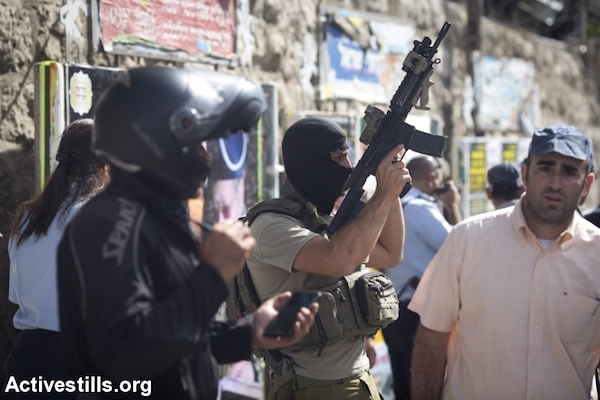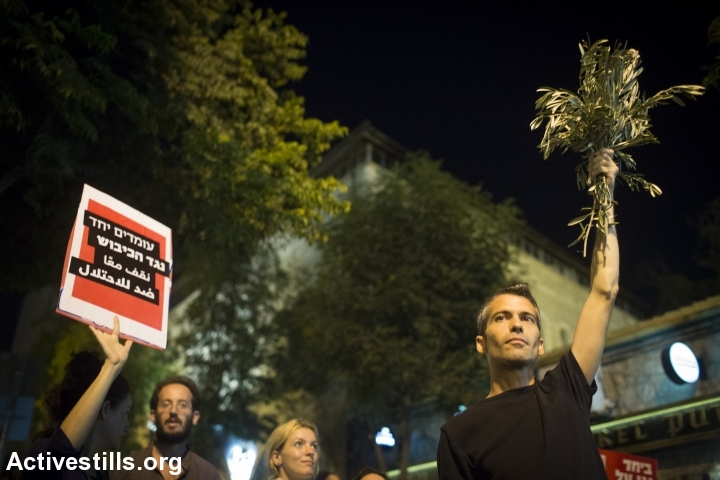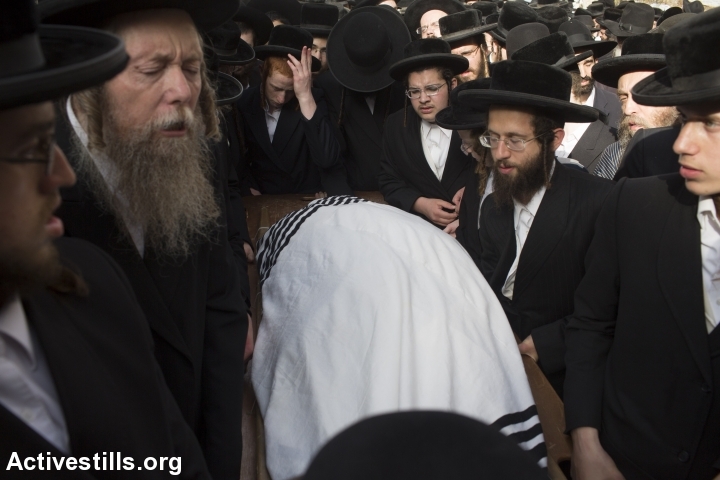Calling the current events in Israel-Palestine a ‘cycle of violence’ is a misnomer — it is a cycle of rage, of which violence is just one part.

In the middle of a recent conversation with a university lecturer, I mention an incident I witnessed while photographing a demonstration in the West Bank a few weeks earlier. I recount seeing a Palestinian teenager sobbing while watching her (unarmed, peaceful) father being hauled away by members of the Border Police, his hand reaching back towards her in desperation. Recalling my feelings of despair and fury at what I saw, I confide to the lecturer that in that moment — standing alone with a camera in the middle of the road — I didn’t know whether to hit something or burst into tears.
The lecturer, who specializes in the social and psychological impact of violence, fixes me with a knowing look.
“But that’s what rage is,” she tells me. “Between killing and crying.”
***
Rage is never far away in Jerusalem these days. While the current spurt of violence has touched almost every part of Israel-Palestine, the majority of stabbing attacks have taken place in and around East Jerusalem and the Old City. Coupled with Israel’s casual use of lethal force during suspected terrorist attacks and the frequent clashes that have broken out as a result, this has meant that a disproportionate number of casualties in this round, both Palestinian and Israeli, have been residents of Jerusalem.
But the proximity of rage is a permanent state of affairs in Jerusalem, which is easy to forget given the spiraling situation. Even during periods of “quiet,” we are only ever between storms. It is therefore important to understand the role that rage plays in lighting the fuse. This is no way justifies violence, but it can be helpful — especially when one is walking around in constant fear of attack — to understand why it is occurring in any given situation.
The roots of unrest in East Jerusalem are vast, much-discussed and clear: this is an area where 75 percent of the population lives under the poverty line; where there is an ever-present threat of home demolitions, evictions and land expropriation; where nearly 1,200 Palestinians were arrested by Israeli police in the second half of 2014; and where the trigger-happy attitude of Israeli security forces has caused death, disability and disfigurement — with children paying a particularly heavy price. Water crises and sorely lacking municipal services in the Jerusalem neighborhoods on the other side of the wall add to the mix. Often overlooked too, as my colleague Edo Konrad recently pointed out, is that East Jerusalem’s Palestinian residents are stateless.

The European Union warned earlier this year that Jerusalem had reached a boiling point of “polarization and violence,” with tensions over Al-Aqsa Mosque finally lighting the powder keg. The former head of a parents’ council in the east of the city told +972 recently that “the pressure the state puts on [young Palestinians] has brought them to a place where life and death are the same thing.”
Yet the response from the Israeli government during the current escalation has been the predictable “increased security measures.” As is often heard during periods of heightened tension, Israel has a tendency to only speak — and understand — the language of force. Only Monday, Prime Minister Benjamin Netanyahu declared that “we will live forever by the sword.”
So in East Jerusalem, rather than addressing the rage that squats behind each attack, the Israeli government simply serves up to the Palestinians more of what has been provoking violence in Jerusalem for decades: more boots on the ground, more checkpoints, more weapons, more walls. More occupation. Netanyahu has even, as came to light on Sunday, proposed rescinding the permanent resident status of 80,000 Palestinians who live within Jerusalem’s municipal boundaries but who are cut off by the separation wall.

All of this may bring temporary calm (for Israelis; for Palestinians in East Jerusalem, the deafening scrutiny of Israel’s “increased security measures” dissolves any pretense of a normal life). But this quick-hit, quick-fix response to disturbances in Jerusalem misses the point entirely.
Instead, it is exactly what leads to cycles of violence. The automatic response to violence, as the university lecturer further explained to me, is punishment, and punishment is exclusively an exercise of power. And power is the one thing that Israel is absolutely unwilling to relinquish when it comes to Jerusalem — indeed, the government seems paradoxically prepared to tear the city apart in order to maintain its grip over it.
Given that maintaining a united Jerusalem as Israel’s “eternal capital” has been one of the policy cornerstones of every Israeli prime minister since the occupation began in 1967, the magnitude of what is currently being proposed for the city has not been lost on Israelis. In a speech on Monday marking the 20th anniversary of Yitzhak Rabin’s murder, President Rivlin spoke of “difficult days, days in which we are in a struggle over Jerusalem.”
Dedicating most of his speech to the need to keep the city united, he claimed: “Today, it is clear to all of us that we cannot continue to ignore the eastern parts of the city, we cannot neglect its existence.”

Yet Israel does ignore the existence of East Jerusalem, except when there is violence. And then the cycle begins anew; we seem doomed to repeat the same punishments, like characters in Dante’s Inferno. And as long as we are unable to break this pattern we will be forced to watch Jerusalem — a city whose fate affects so many — spasming with rage, over and over again; its residents caught endlessly between killing and crying.
***
A few months ago, not long after my discussion with the lecturer, I was walking through south Tel Aviv after a peaceful demonstration in East Jerusalem that had, depressingly and predictably, been met with police violence. Casting my eyes around, I saw a solitary bird’s wing lying on the pavement. For an instant I saw that torn-off, discarded wing as a symbol of Jerusalem: a shadow of violence and freedom lost, with the remains a glimpse of what once was, and of all that could have been.


